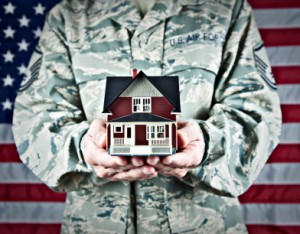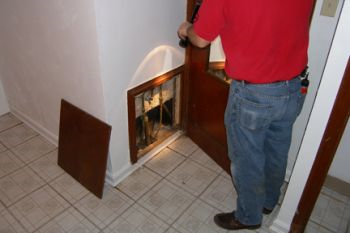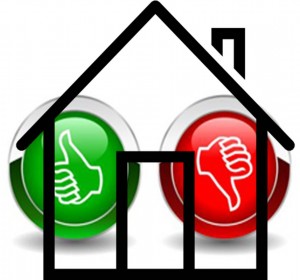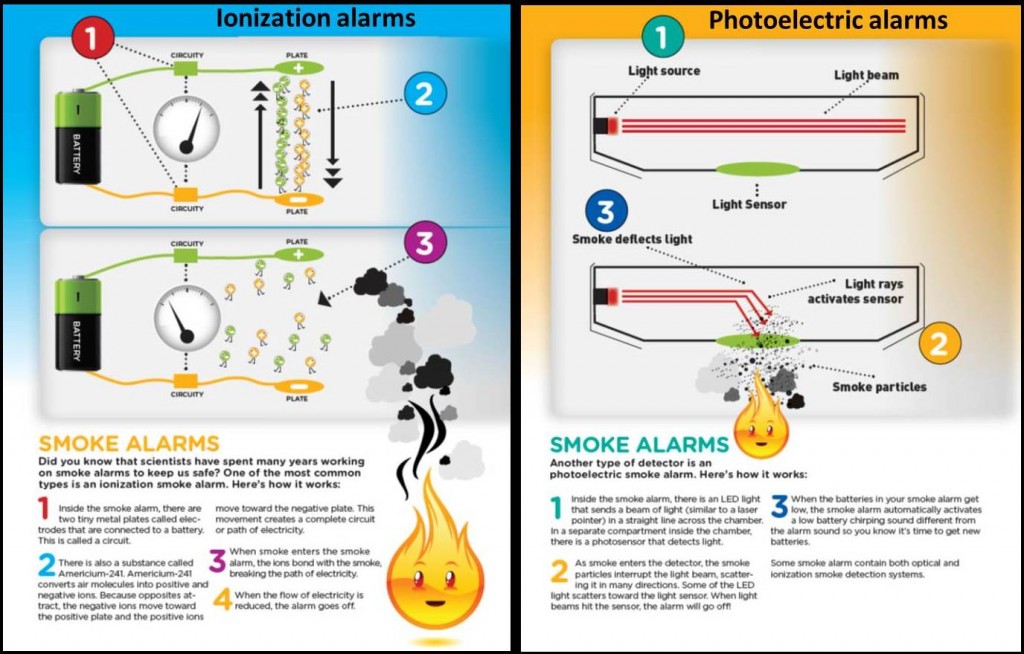 Many potential home buyers in and around Osceola County apply for Veterans Administration (VA) financing, and know that there will be a separate VA inspection. Aware that this separate home inspection could add complications to their mortgage, we’re often asked if – during our inspection – we’ve seen anything that could be an issue for the Veterans Administration inspector.
Many potential home buyers in and around Osceola County apply for Veterans Administration (VA) financing, and know that there will be a separate VA inspection. Aware that this separate home inspection could add complications to their mortgage, we’re often asked if – during our inspection – we’ve seen anything that could be an issue for the Veterans Administration inspector.
The Veterans Administration inspector is generally a real estate appraiser that has been trained and certified by the Veterans Administration to go beyond simply estimating the market value for the home as they would as a result of a traditional appraisal. For the VA, the appraiser must also confirm that the home meets the VA’s Minimum Property Requirements (MPRs), a baseline standard that confirms that the house is structurally sound, safe, and move-in ready.
While the Veterans Administration appraiser has a certain amount of leeway for determining what is acceptable and safe in their personal opinion, here are some of the areas the VA will be checking.
Roof – Must be good shape, and the biggest issue that can make a house unsuitable for Veterans Administration financing. The roof should have at least a few years of useful remaining life. Shingles that are beginning to curl at the edges, visible damage, or any evidence of leaks is not acceptable.
Electrical panel – The panel and wiring must be in good safe condition and free of loose wires, damaged receptacles, or other hazards.
Plumbing – All plumbing must be satisfactory; corroded plumbing or an ancient water heater would fail the plumbing evaluation.
Heating system – The heating system must be in serviceable condition and serve all the living areas of the home.
Dry crawl space/basement – Moisture intrusion or standing water in these areas must be repaired.
General safety measures – Items that can fail this portion of the Veterans Administration inspection include missing stair railings, sagging beams, and cracked window glass.
In addition to the VA inspector’s review of the home, additional inspections may be necessary for Veterans Administration financing. After these inspections, any problems found must be resolved before closing.
- If the home is in a termite-prone area, a WDO (Wood Destroying Organism) inspection will be needed to verify that there is no termite infestation or damage.
- If built prior to 1978, the year lead paint was banned in the US, a lead paint inspection may be required.
- If the home is not served by a municipal water system, a well inspection and testing of the water for bacteria contamination will be required.
Other defects not on the MPR list may also raise a concern. As the VA appraiser’s inspection is not as thorough as a regular home inspection, the VA recommends (but does not require) that you also get a traditional home inspection.
For additional information, call us at BUY YOUR SIDE Home Inspections: 407.780.0911
Read More
 It’s easy to understand that you – as either the homeowner or a resident of the home – may be apprehensive about the buyer’s inspection of your residence. The biggest misconception is that this inspection is a “Pass/Fail”. Here is what you can expect when we’re there.
It’s easy to understand that you – as either the homeowner or a resident of the home – may be apprehensive about the buyer’s inspection of your residence. The biggest misconception is that this inspection is a “Pass/Fail”. Here is what you can expect when we’re there.
Although minor (and occasionally not-so-minor) issues may be observed and reported, the focus of the home inspection is on defects that in the inspectors’ opinion adversely affect the proper functionality or safety of the evaluated systems and components of the property.
It’s best to allow us to proceed with complete access of your property, and without excessive interruption, so that we’re able to conduct a comprehensive and fair evaluation. Sometimes residents or homeowners prefer not to be at the inspection, and instead have an agent present, but we welcome your presence if you choose to be there.
Generally, the home inspector will conduct examinations throughout the interior and exterior of the home. This includes walking on the roof; climbing in the attic; opening windows and doors; operating the heat pump or furnace and air conditioning systems and standard appliances; opening electrical panel enclosures; looking under the sinks in the kitchen and bathrooms; running water in sinks, showers, tubs, etc.
After years of conducting home inspections in and around Osceola County, we have an established routine as we progress through the home. If there are any areas or components of the home that you do not wish to be accessed or operated, please inform the home inspector. Also, if you are aware of any problems or adverse conditions affecting the building and related systems please let the inspector know that as well.
Finally, the prospective buyers are encouraged to accompany our inspectors so we can point out items of particular interest and so they can ask questions. So while there likely won’t be a superstar-worthy entourage, you should plan on having a few us on site.
Read More
 It’s actually impossible for a home to fail a home inspection.
It’s actually impossible for a home to fail a home inspection.
Yes, you read that correctly.
A home inspection is – much like an annual physical with your doctor – an examination of a house.
So there is no pass/fail per se.
The main purpose is to spell out the overall health of the home and identify what repairs are needed.
Based on our years of inspecting in and around Osceola County, we’ve come with a list of those fixes that should be addressed immediately as well as other repairs that shouldn’t deter you from buying or selling a home.
We’ve put together a range of costs for each. These costs are only estimates and you should get bids from several licensed contractors before you begin any work.
Issues to address immediately include problems identified in areas like your roof, ceilings and foundation. Addressing them now avoids problems and dangers in the future.
Repair the roof: $730 to $1,100; roofing problems include leaks, pest infestations and missing shingles; if the roof is nearing the end of its life, then buyer or seller should plan on investing in a new one.
Replace the water heater: $870 to $1,100; water heaters in service 10 years or more cost more to operate and could experience plumbing and heating problems.
Repair a foundation: $3,580 to $5,400; the safety of your home depends, literally, on its foundation so be sure it doesn’t need piering or slabjacking to get it upright again, as these will cost more than fixing cracks.
Repairs to do over time include smaller problems – the air conditioning not working correctly, leaks in windows or doors and cracks in the flooring – will be identified because home-inspection reports are so extensive. Certainly they’ll need to be addressed at some point but dangerous or potentially so.
Repair an air conditioning system: $350 to $510; strange noises and less cool air than usual might be easy repairs, but inefficient duct systems or problems with the unit itself that may force replacement.
Repair one or more windows: $310 to $450; window cracks, leaks and loose panes are easy fixes, but faulty windows eventually need to be replaced; you home inspector will tell you how bad the issue is in their report.
Repair a door: $240 to $350; a few quick stops at the hardware store are easy fixes for a bad door knob, lock or leaks but it fits improperly or has extensive cracks, it might need to be replaced.
Clean ducts and vents: $320 to $430; dirty ducts and vents can decrease the amount of air circulating in your home; making it tough to room temperatures.
To be sure, a home inspection will not reveal the actual value of a home (you need to hire an appraiser for valuation) or its compliance to standard building codes (that’s the role of a building inspector). But it does give you a clear picture of the relative wellbeing of the home.
We’re committed to delivering thorough and honest reports on your property’s health. We’re BUY YOUR SIDE, serving all of Osceola County: Kissimmee, Saint Cloud, Poinciana and surrounding areas. Call: 407.780.0911
Read More
 Home smoke alarms probably get our collective attention twice a year – when it’s time to change the clocks, we’re urged to change the batteries in them.
Home smoke alarms probably get our collective attention twice a year – when it’s time to change the clocks, we’re urged to change the batteries in them.
As you know, BUY YOUR SIDE Home Inspections believes that regular maintenance of homes is important – whether you’re buying, selling or staying put. So, we thought we’d address smoke alarm maintenance and whether or not a smoke alarm will save you in the event of fire.
REPLACE SMOKE ALARMS REGULARLY
According to the National Fire Protection Association (NFPA ) and the US Fire Administration, smoke alarms should be replaced every eight to ten years. Although some newer alarms already have production dates stamped inside of the alarm, both agencies recommend writing your date of purchase with a marker on the inside of your alarm so you will know when to replace it.
If you can’t find a date on the back, assume it’s over ten years old and replace it.
NOTE: Some homes have a dual carbon monoxide/smoke detector. Carbon monoxide (CO) alarms are good for only about six years, so your best bet is to avoid the smoke alarm/CO alarm combo units. Buy individual alarms and follow the manufacturer’s instructions for timely replacement of each type.
INSTALL THE RIGHT TECHNOLOGY
There are many different brands of smoke alarms available on the market but they fall under two basic types: ionization and photoelectric.
Ionization alarms sound more quickly when a flaming, fast moving fire occurs. This type of smoke alarm has a small amount of radioactive material between two electrically charged plates, which ionizes the air and causes current to flow between the plates. When smoke enters the chamber, it disrupts the flow of ions, thus reducing the flow of current and activating the alarm.
Photoelectric alarms are quicker at sensing smoky, smoldering fires. These alarms aim a light source into a sensing chamber at an angle away from the sensor. Smoke enters the chamber, reflecting light onto the light sensor; triggering the alarm.
Because these two types of smoke alarms are better at detecting distinctly different yet potentially fatal fires – and because it’s impossible to predict what type of fire might start in a home – the two fire safety organizations recommend the installation of both ionization and photoelectric smoke alarms. There are dual smoke alarms that combine ionization and photoelectric into single units.
There are also alarms made specifically to meet the needs of people with hearing disabilities. These alarms may use strobe lights that flash and/or vibrate to assist in alerting those who are unable to hear standard smoke alarms when they sound.
LOCATE AND INSTALL SMOKE ALARMS PROPERLY
At a minimum, smoke alarms should be installed inside of each bedroom, and in at least one common area on every level including the garage, basement and attic.
Always follow the manufacturer’s installation instructions so they operate effectively. The best placement for a smoke alarm is usually on the ceiling, in the middle of the room. If you’re going to install the smoke alarm on a wall, or on the ceiling near a wall, don’t place it too close to the corner. Most manufacturers recommend locating smoke alarms at least 4″ away from corners. When installing smoke alarms on a sloped or peaked ceiling, they should be within 6’ horizontal fee of the peak and well clear of the apex.
MOUNT WIRELESS SMOKE ALARMS FOR OLDER HOMES
Many homes built within the last twenty years have interconnected, hardwired smoke alarms with battery backups. These hardwired systems may be either independent of or connected to security systems.
Usually, older homes just have only independent, battery operated smoke alarms. This set-up begs this question: “if a smoke alarm sounds in the garage on one side of the house, will we hear it upstairs on the other?” Wireless smoke alarms communicate with each other just like interconnected hardwired smoke alarms; if one goes off, they all go off.
NOTE: To test if your existing smoke alarms are interconnected, hold down the test button and listen. If they’re online together, they will all sound at the same time or within a very brief delay between them.
Smoke alarms must be within their useful life, utilize technology that will activate in a variety of fires, be properly installed, and be adequately positioned can make all the difference of whether or not they will be effective when you most need them to be.
Read More
 Many potential home buyers in and around Osceola County apply for Veterans Administration (VA) financing, and know that there will be a separate VA inspection. Aware that this separate home inspection could add complications to their mortgage, we’re often asked if – during our inspection – we’ve seen anything that could be an issue for the Veterans Administration inspector.
Many potential home buyers in and around Osceola County apply for Veterans Administration (VA) financing, and know that there will be a separate VA inspection. Aware that this separate home inspection could add complications to their mortgage, we’re often asked if – during our inspection – we’ve seen anything that could be an issue for the Veterans Administration inspector.



Follow Us!